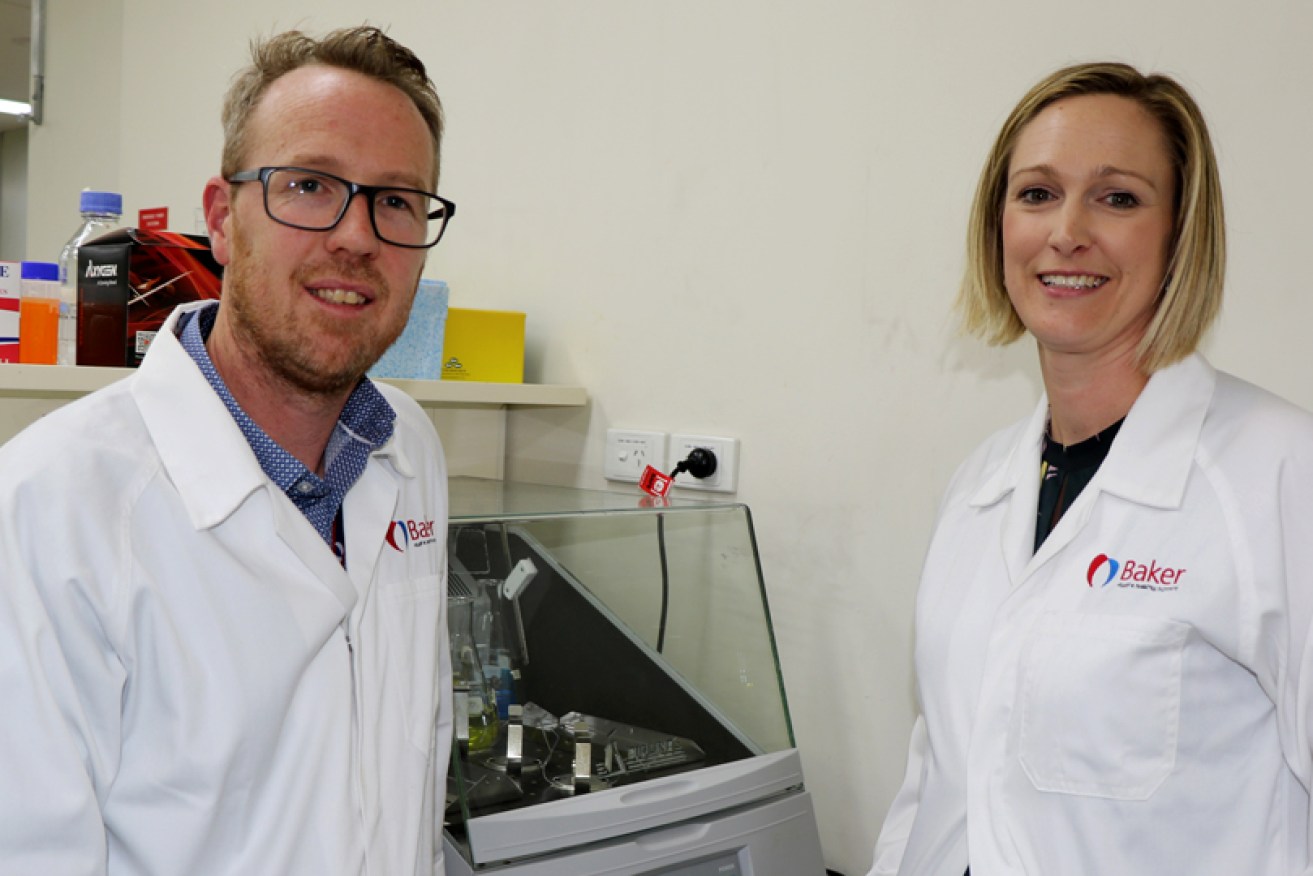Australian discovery may predict ‘complex’ liver disease


Husband and wife team Dr Brian Drew and Dr Anna Calkin have identified biomarkers to predict fatty liver disease. Photo: The New Daily
Australian researchers have led a breakthrough study that paves the way for early diagnosis and treatment of a common and serious liver condition that is now affecting more young people than ever before.
Described as a ‘hidden epidemic’ by experts, fatty liver disease is caused by a build-up of toxic fats in the liver.
It has no early symptoms, and if left undetected, can lead to diabetes, heart disease, cancer and other life-threatening illnesses.
The condition affects about one in five Australians and is predicted to be the leading cause of liver transplants in the next 10 to 20 years.
In a world-first, the team of scientists from Melbourne’s Baker Heart and Diabetes Institute, University of Sydney and University of California has discovered a group of fats in the blood that could predict toxic molecules in the liver – an early warning sign of the disease.
“Most of the time the disease is untraceable until it becomes a problem – and when it becomes a problem, it’s almost too late,” Dr Brian Drew, one of the lead investigators from the Baker Heart and Diabetes Institute, said.
“If we can detect it earlier then we have a much better chance of reversing any potential complications further down the track,” he told The New Daily.

Dr Anna Calkin from the Baker Heart and Diabetes Institute investigates the role of genetics in fatty liver. Photo: The New Daily
The findings, published in the prestigious journal Nature on Thursday, could lead to a simple blood test that may detect fatty liver before the condition progresses.
“You could potentially in the future go to the doctor and get this test done and it could tell you your risk,” Dr Drew said.
The scientists have also linked new genes to fatty liver, which could explain how the condition starts and develops in some people, Dr Anna Calkin, study co-author from the Baker Institute, said.
“If we can understand which of these genes are like ‘switches’, and turn this disease on, then we can identify those individuals to try and improve their lifestyle and diet, and maybe even use drug therapy,” she told The New Daily.
Surprise diagnosis
At 59 years of age, Bin Dixon-Ward considers herself a fit and active person – she rides her bike approximately 12 kilometres every day to work and surfs or swims on most weekends. So, when the Melbourne resident was diagnosed with fatty liver disease it came as a complete shock.
“It was a surprise because, although I’m overweight, I’m physically active and not a big drinker,” she told The New Daily.
“I had no idea I had fatty liver, or that it was even a thing.”

Love of the outdoors: Melbourne resident Bin Dixon-Ward manages the condition with diet and lifestyle changes. Photo: Andrew Sikorski
During a routine cholesterol check, she was tested for a specific type of the condition known as non-alcoholic fatty liver disease. It tends to affect people who have type-2 diabetes, high blood cholesterol, high blood pressure or those who are overweight.
“I was told to lose weight and start a low calorie diet to control the disease,” Ms Dixon-Ward said.
“But if I had known there was an issue with my liver, I would have addressed it earlier.”
Non-alcoholic fatty liver disease has fuelled a spike in liver transplants in recent years, according to a 2018 analysis by West Australian researchers.
Before 2000, there were no cases of the transplant recorded for the disease. In the period between 2010 and 2014, non-alcoholic fatty liver disease accounted for 6 per cent of all transplants in Australia. By 2015, this figure had risen to 9 per cent.
Rising rates in young people
According to the Gastroenterological Society of Australia (GESA), non-alcoholic fatty liver disease is also increasingly being diagnosed in children.
GESA vice-president Associate Professor Simone Strasser said the obesity crisis is mostly to blame.
“It’s linked to rising rates of obesity in adolescence, which is linked to changes in dietary intake and reducing levels of exercise. And fatty liver disease is associated with obesity, so they go hand in hand.
“It seems to be getting younger and younger,” she told The New Daily.
According to one 2010 Australian study, 13 per cent of teenagers were estimated to have the disease, with those who were overweight as toddlers more likely to develop the condition into adolescence.
A 2015 meta-analysis of global cases found that non-alcoholic fatty liver disease was more common among teens who were obese, and male. Adolescents from Asian countries were also more likely to have the disease, the researchers found.








